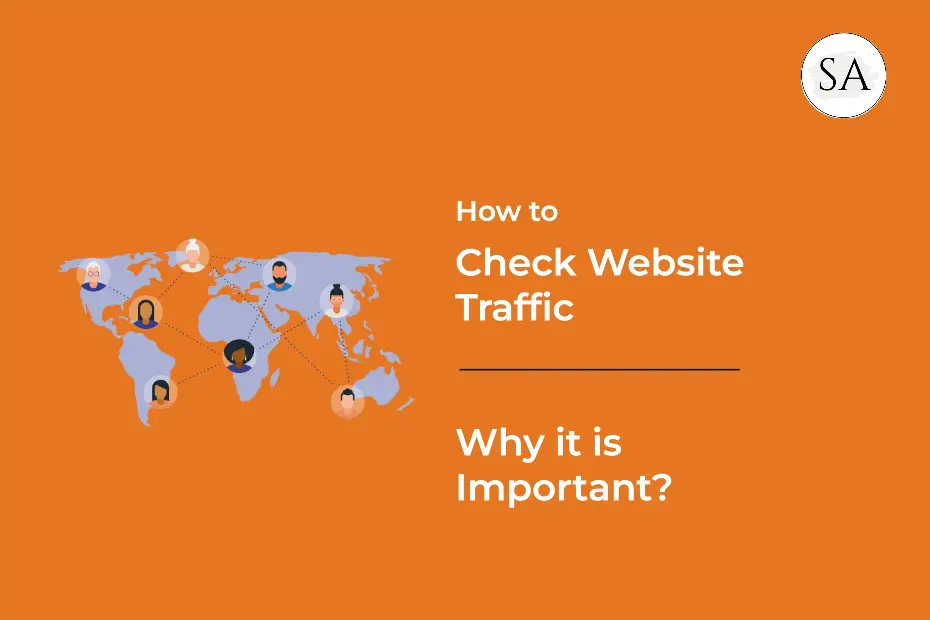Website traffic is one of the most important metrics for every SEO. It defines the performance of the website, the source of their traffic and helps them to create further marketing strategies.
There are many other website metrics as well like Domain Rating(DR), Domain Authority (DA), Spam Score, Majestic Score, and a few more. But website traffic and the source of website traffic play a crucial role in all these because they help to accelerate the sales of business and tell you that your website is getting more visits, gaining popularity, and getting higher ranking on your target keywords.
What is Website Traffic?
Website traffic refers to the volume of visitors a website receives within a specific timeframe. It serves as a crucial metric for evaluating a site’s popularity, reach, and overall performance. The number of people accessing a website determines its traffic, and this data is often analyzed to understand user behavior, enhance content strategy, and optimize marketing efforts.
Web traffic can be categorized into various types, including organic traffic, which originates from search engine results; direct traffic, where users directly type the website’s URL; and referral traffic, generated through external links. Understanding these traffic sources helps website owners tailor their strategies to attract, retain, and convert visitors.
Analyzing website traffic involves assessing key metrics such as page views, unique visitors, bounce rate, and conversion rates. These insights aid businesses in refining their online presence, improving user experience, and targeting their audience more effectively.
In essence, website traffic serves as a barometer of a site’s success, reflecting its visibility, engagement, and impact in the digital landscape. By comprehending and strategically leveraging web traffic data, businesses can optimize their online performance and effectively connect with their target audience.
Types of Website Traffic
Website traffic encompasses diverse types, each offering unique insights into user behavior and interaction with a site. The primary categories include:
1. Organic Traffic: Originating from search engine results, organic traffic is driven by users actively searching for information related to the website’s content. Optimizing for relevant keywords enhances organic visibility.
2. Direct Traffic: Users accessing a site by directly entering its URL into the browser contribute to direct traffic. This often signifies brand familiarity or bookmarked pages.
3. Referral Traffic: Generated through external links from other websites, referral traffic showcases the impact of partnerships, collaborations, or content shared across online platforms.
4. Social Media Traffic: Users navigating to a website through links shared on various social media platforms contribute to social media traffic. Engaging content on platforms like Facebook, Twitter, or Instagram can drive this type of traffic.
5. Paid Traffic: Resulting from online advertising efforts, paid website traffic involves users clicking on paid advertisements to reach a website. Platforms like Google Ads or social media ads play a significant role in generating paid traffic.
6. Email Traffic: Click-throughs from links within emails contribute to email traffic. Email marketing campaigns and newsletters often drive users to specific pages on a website.
Understanding the dynamics of these traffic types empowers website owners to tailor their strategies, enhance user experience, and maximize the impact of their online presence.
Why Website traffic is Important?
Website traffic is a critical metric for gauging the success and effectiveness of an online presence. Several reasons underscore the importance of website traffic:
1. Popularity and Reach: High website traffic indicates that a site is popular and has a broad reach. This visibility is crucial for brand recognition and attracting a diverse audience.
2. User Engagement: The number of visitors provides insights into user engagement. Analyzing metrics like page views, session duration, and bounce rate helps understand how effectively the website captures and retains audience attention.
3. Content Performance: Monitoring website traffic allows businesses to assess the performance of different content types. By identifying which pages attract the most visitors, organizations can tailor their content strategy to meet user interests and needs.
4. Conversion Opportunities: More traffic means more potential conversions. Whether the goal is sales, subscriptions, or engagement, a larger audience increases the likelihood of achieving desired outcomes.
5. SEO Impact: Search engines often prioritize websites with higher traffic, considering them more relevant and valuable. Therefore, consistent and growing website traffic positively influences search engine rankings, enhancing overall online visibility.
6. Advertising ROI: For websites relying on advertising revenue, increased traffic translates to higher ad impressions and, subsequently, improved return on investment (ROI) for advertising efforts.
In essence, website traffic serves as a key performance indicator, reflecting the effectiveness of digital strategies. By understanding the importance of website traffic, businesses can make informed decisions to optimize their online presence and achieve their goals.
How to Check Website Traffic Source
Checking a website’s total traffic and traffic sources is crucial for understanding its performance and refining marketing strategies. Several tools and methods can help with this analysis:
1. Google Analytics: A powerful and widely used tool, Google Analytics provides comprehensive insights into website traffic. Users can track total visitors, unique visitors, and analyze traffic sources such as organic search, direct, referral, social, and paid.
2. Website Analytics Platforms: Besides Google Analytics, various other analytics platforms like Adobe Analytics, Matomo, and others offer similar functionalities. They track overall traffic metrics and provide detailed breakdowns of traffic sources.
3. Content Management System (CMS) Analytics: Many CMS platforms, such as WordPress, include built-in analytics features. These tools offer a quick overview of website traffic, popular pages, and referral sources.
4. SEO Tools: Some startup SEO tools like SEMrush, Ahrefs, and Moz provide not only SEO insights but also valuable data on a website’s overall traffic and the sources contributing to it. They help identify keywords driving traffic and assess competitors’ strategies.
5. Web Hosting Control Panels: Hosting providers often offer control panels with basic analytics, showcasing total visits, page views, and sometimes traffic sources. This is beneficial for a quick overview.
To check website traffic and sources, one can log into these platforms, navigate to the respective sections, and explore reports and dashboards. Regular monitoring of these metrics empowers website owners to adapt their strategies, identify successful channels, and optimize for improved performance.
Conclusion
Website traffic is one of the most important aspects of every business. It helps businesses to increase their sales and goodwill. It also helps businesses to know where they should focus their further efforts and what will be the most effective marketing strategy.
For SEO agencies and freelancers, it’s very important to keep track of website traffic for their clients. So they can know if their client’s website source traffic is from their desired location or not.
To Simplify research of website traffic of different partner or client websites you can make good use of SEO tools like Ahrefs, SEMrush, Moz, and a few more efficient tools.
Unlock the success of your business by gaining knowledge of website traffic.




